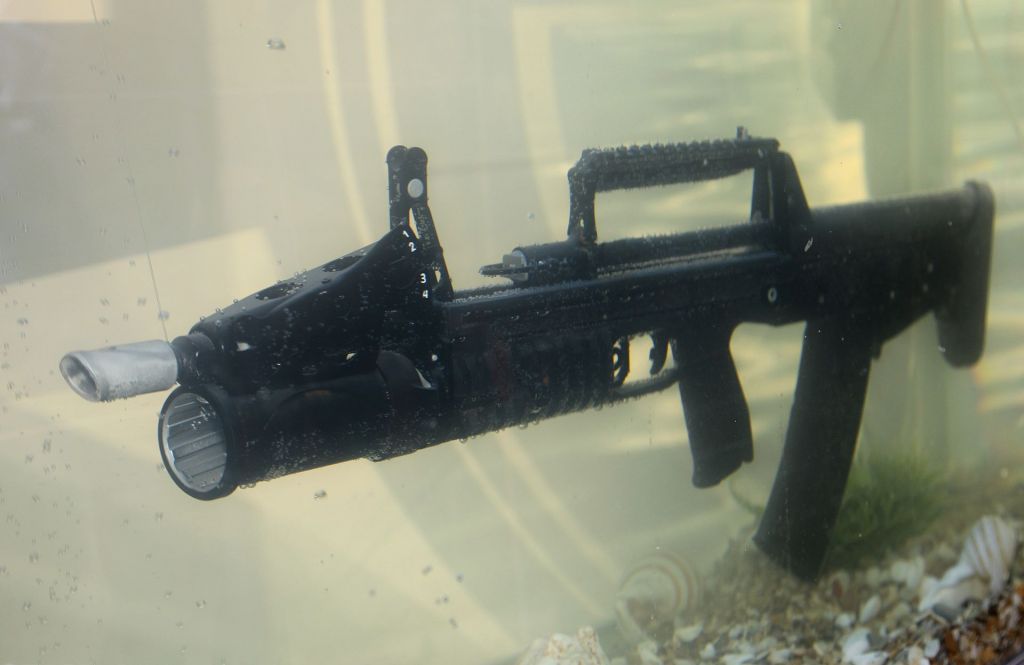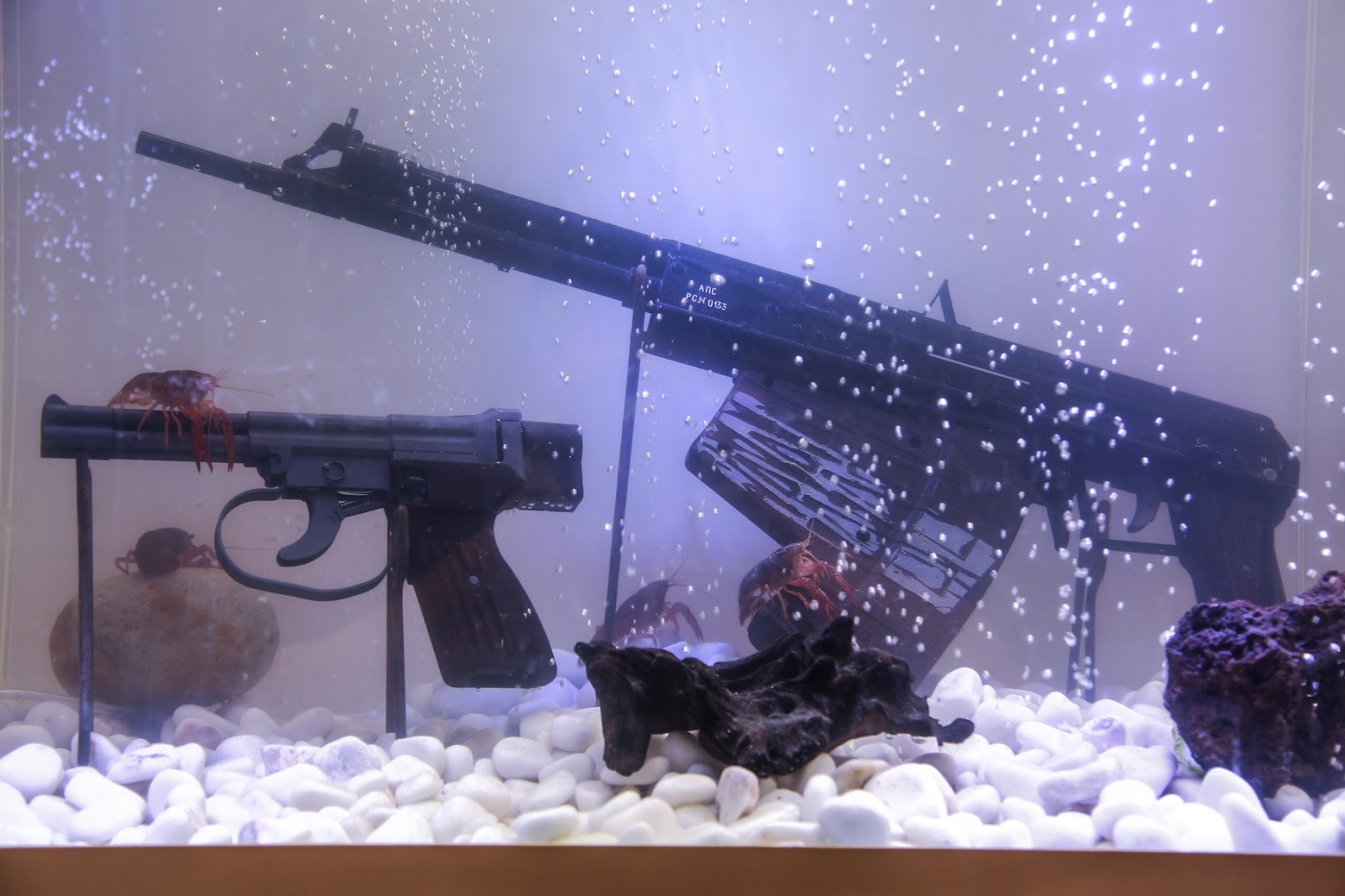
Soviet Navy military swimmers were armed with unique pieces of underwater weapons - SPP-1 pistols and APS assault rifles - as early as in the 1970s.
Those were designed by the engineers from the Central Scientific-Research Institute of Precision Engineering (TsNIITochMash) which is now a part of Rostec.
Since conventional projectiles cannot 'swim' making the underwater shooting distance only a few meters, the TsNIITochMash's engineers developed special needle-like projectiles - flechettes - for the underwater pistols and assault rifles.
This type of weapons has been renovated and is still successfully utilized by the Russian military swimmers.
Cartridges for Water
It is a well-known fact that conventional projectiles lose their velocity quite rapidly when shot in water. This happens because of simple physics laws: the density of water is higher than that of air. That is why it takes just a few meters to completely 'disarm' a regular bullet. To make underwater weapons efficient, you need to use projectiles that are rather long.
So, a 115-mm long needle-like flechette was first introduced by the engineers from TsNIITochMash. The special streamline spear-like shape created a caverne (an air pocket) around the bullet thus reducing the resistance.
The telescopic sabot in the cartridge's shell casing prevents the combustion gases from being released after the shot is fired and the projectile is pushed out.
The development of this new ammunition allowed the engineers to create the first amphibious pistol, and in 1970 they presented the four-barrel SPP-1 to the State Commission.
Sometime later, in 1975, the amphibious APS assault rifle was introduced into service. In 1982, the creators of the underwater flechettes, the TsNIITochMash engineers P. Sazonov and O. Kravchenko received the USSR State Prize.
The 4.5-mm projectiles designed for the SPP-1 underwater pistol and the 5.66-mm projectiles for the APS assault rifle are still being produced by the TsNIITochMash.
Recently, the company introduced an automatic assembly line for those cartridges.
The new manufacturing will increase the productive capacity to over 10,000 cartridges per day.
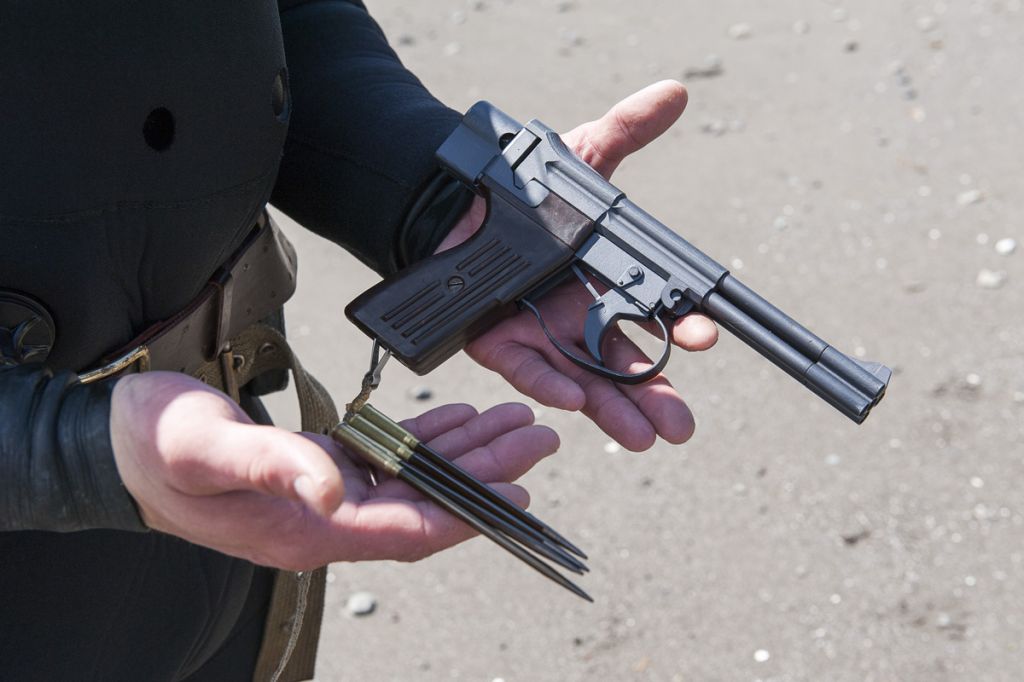
SPP-1: Underwater Pistol
SPP-1 (rus. 'Специальный пистолет подводный' - Special underwater pistol) was introduced into service in 1971 and has been the individual weapon for the frogmen since. It is used to shoot down underwater targets - marine predator fish as well as the enemy's frogmen.
It was designed by the engineers from TsNIITochMash and is produced by the Tula Arms Plant which is also a part of Rostec.
SPP-1 has a block consisting of four smoothbore barrels and shoots 4.5 mm fletchettes using one barrel at a time. One flechette has almost the length of the barrel.
The lethal range is 20 m when fired in the air, 17 m when fired 5 m underwater, and 11 meters when fired 20 m underwater.
The underwater reloading time is only 5 seconds.
All the barrels are recharged at once: the shell casings of four cartridges are stripped together with a flat steel clip.
If the barrels were to be charged separately, it would take a lot longer.
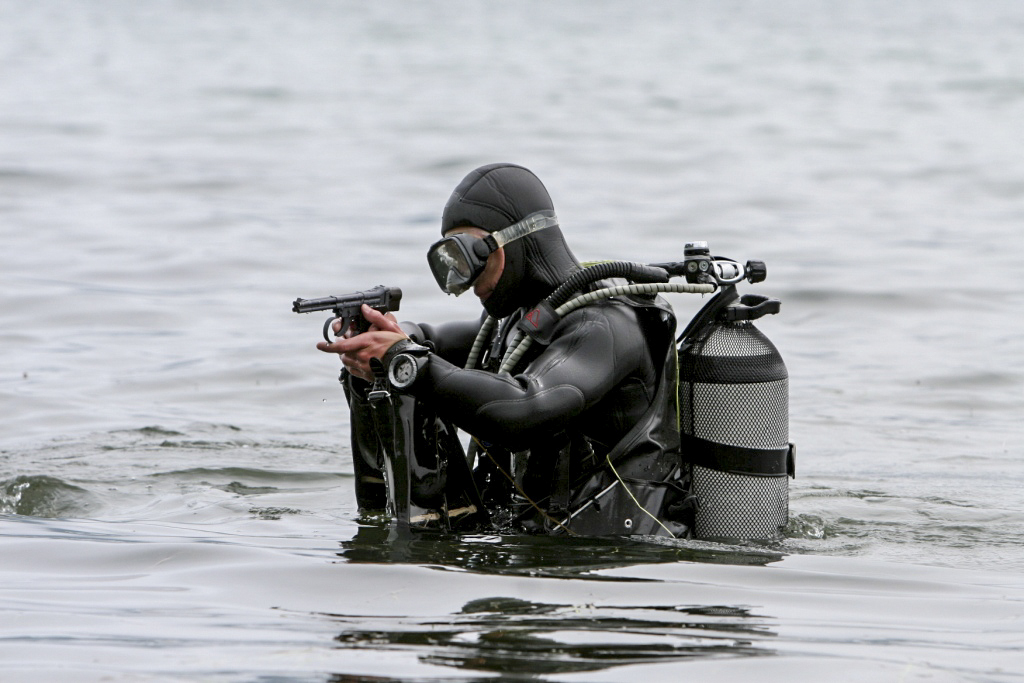
APS-5: Underwater Assault Rifle
In 1970, TsNIITochMach started working on creating an amphibious assault rifle.
APS-5 was introduced into service in 1975. It has been batch manufactured by the Tula Arms Plant.
However, the assault rifle was declassified only in 1993 and presented at the IDEX arms exhibition in Abu Dhabi the same year.
When shot 5 m underwater, the 5.66 mm projectile reaches its target within the range of 30 m.
Lethal range drops as you go deeper underwater making it 20 m when 20 m underwater and just 10 m when 40 m underwater.
The assault rifle can engage in both single rounds and automatic firing.
It can be used out of water if necessary, but barely for anything but self-defense.
First of all, its out-of-water lethal range is quite small - 100 m max.
Second of all, the assault rifle is designed for underwater use, so when shot out of water, its life resource is spent too fast - instead of the 2000 underwater shots the parts can only survive 180 rounds.
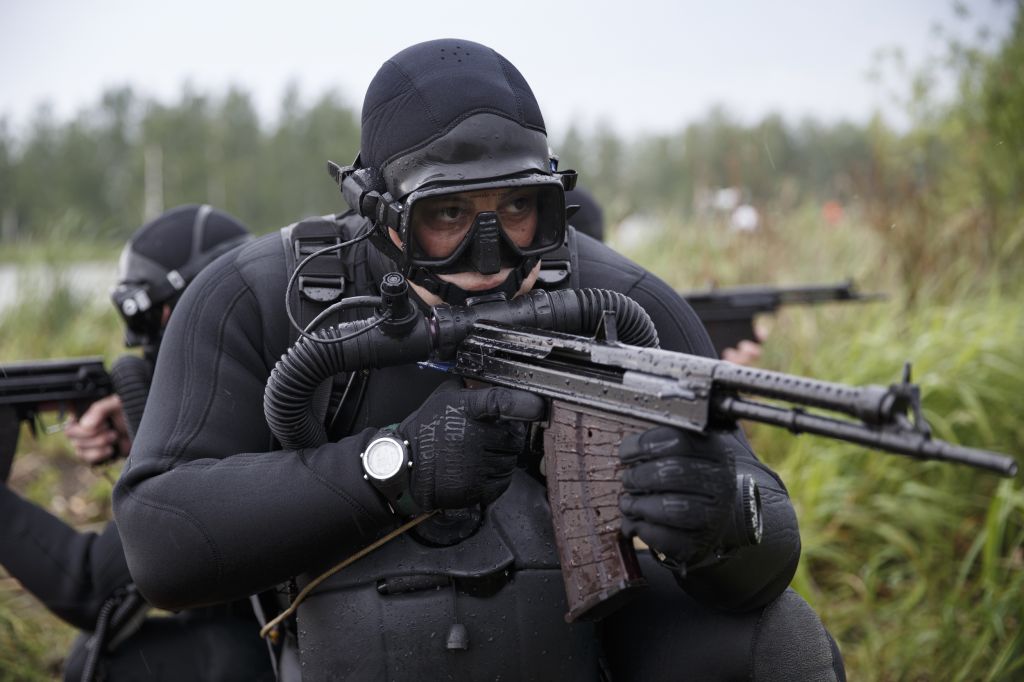
ADS: Two-Media Assault Rifle
SPP-1 and APS's rather low combat qualities for air shooting as well as their high out-of-water wearability forced frogmen to carry two pistols and assault rifles (the underwater ones and the conventional AK and PM).
To solve that problem, the engineers of the Tula KBP (Instrument Design Bureau) developed the ADS two-media assault rifle.
This might be the first weapon in the world that is equally efficient underwater and out of it.
The idea and the general design of the ADS assault rifle belong to Vasiliy Gryazev, a prolific small arms designer.
The weapon was made of metal after his death by his colleagues and students who worked at the TsKIB SOO (Central Design and Research Bureau of Sporting Weapons), a part of the KBP Instrument Design Bureau.
The unique underwater cartridge was also designed at the TsKIB SOO.
Underwater fire is performed with 5.45x39-mm cartridges.
Air fire is performed with conventional cartridges of the same caliber.
A magazine case loaded with underwater cartridges can be easily replaced with one loaded with conventional cartridges for a standard Kalashnikov.
The amphibious assault rifle's rate of fire in the dry ranges betwee 600 and 800 RPM.
Firing range is up to 600 m.
Underwater, it can shoot a target within the range of 25 m.
